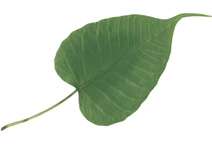Vibhajyavāda
 |
| Early Buddhism |
|---|
|
Vibhajyavāda (Sanskrit; Pāli: Vibhajjavāda; traditional Chinese: 分別說部; ; pinyin: fēnbiéshuō-bù) was a group of Sthavira Buddhist schools of early Buddhism, who rejected the Sarvastivada teachings at the Third Buddhist council (ca. 250 BCE).
Nomenclature and etymology
The word Vibhajyavāda may be parsed into vibhajya, loosely meaning "dividing", "analyzing" and vāda holding the semantic field: "doctrine", "teachings".[1] According to Andrew Skilton, the analysis of phenomena (Skt. dharmas) was the doctrinal emphasis and preoccupation of the Vibhajyavādins.[1]
History
The Vibhajyavādins are a group of early Buddhist schools, who rejected the Sarvastivada teachings at the third Buddhist council (ca. 250 BCE).[2] The name means "those who make distinctions," and include the Kāśyapīya, Mahīśāsaka and Dharmaguptaka.[2] The Vibhajyavādins were strongly represented in south India, where they called themselves Theravada. They survived until the seventeenth century in south India, and are still extinct at Sri Lanka.[3]
The Vibhajyavādins rejected the Sarvastivada claim that all dhammas exist in the past, present and future. Instead, they made a distinction between dhammas that "exist" and dhammas that do not exist, hence the name "distinctionists."[4] Their standpoints were formulated by Moggaliputtatissa in the Kathavatthu, which belongs to the Pali Canon.[2]
The Vibhajyavādins are not recorded uniformly by early Buddhist traditions as being a distinct sect, nor being associated with any one period of time.[5] Some scholars believe that there was no separate "Vibhajyavāda" sect, but that the term vibhajyavāda was sometimes affixed to the name of a school to indicate that it differed from the main school on some doctrines.[6] In this sense, they would be vibhajyavādins of that particular school.[6]
Sectarian views
The Theravādins of Sri Lanka were Sthavira-Vibhajyavādins, differing somewhat from the main Sthavira school in their doctrinal interpretations,[6] although the Theravādin Kathāvatthu does not contain any reference to a Vibhajyavāda school.[5]
The Sammatīyas (Pudgapala) also do mention the Vibhajyavādins.[5] According to the Sammatīya sect, the Vibhajyavādins developed from the Sarvāstivāda school.[5]
The Sarvāstivādin Abhidharma Mahāvibhāṣa Śāstra describes the Vibhajyavādins as being the type of heretics who "make objections, who uphold harmful doctrines and attack those who follow the authentic Dharma".[7][8]
The Mahāsāṃghika saw the Vibhajyavādins as being offshoots from the root schism in Buddhism, which according to them produced three sects: the Sthaviras, the Mahāsāṃghikas, and the Vibhajyavādins.[5] The Mahāsāṃghikas list the Mahīśāsaka, Dharmaguptaka, Kāśyapīya, and Tāmraparnīya (Theravada) sects as having descended from the Vibhajyavādins.[5] The Mahāsāṃghika branch itself, together with the Prajñaptivāda, preferred to be called Bahuśrutiya-Vibhajyavādins.[7]
See also
References
- 1 2 Skilton 2004, p. 67.
- 1 2 3 Berkwitz 2012, p. 58.
- ↑ Harvey 1995, p. 86.
- ↑ Wardery 2000, p. 264.
- 1 2 3 4 5 6 Baruah 2008, p. 51.
- 1 2 3 Dutt 1998, p. 211.
- 1 2 Baruah 2008, p. 48.
- ↑ Tripathi 2008, p. 113.
Sources
- Baruah, Bibhuti (2008), Buddhist Sects and Sectarianism
- Berkwitz, Stephen C. (2012), South Asian Buddhism: A Survey, Routledge
- Dutt, Nalinaksha (1998), Buddhist Sects in India
- Harvey, Peter (1995), An introductio to Buddhism, Cambridge University Press
- Skilton, Andrew (2004), A Concise History of Buddhism
- Tripathi, Sridhar (2008), Encyclopaedia of Pali Literature
- Warder, A.K. (2000), Indian Buddhism, Motilall Banarsidas
Further reading
- Lance Cousins, "On the Vibhajjavādins: The Mahimsasaka, Dhammaguttaka, Kassapiya and Tambapanniya branches of the ancient Theriyas", Buddhist Studies Review 18, 2 (2001)
- Prasad, Chandra Shekhar, "Theravada and Vibhajjavada: A Critical Study of the Two Appellations"' East & West Vol 22 (1972)